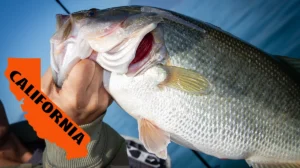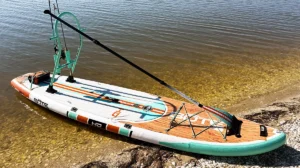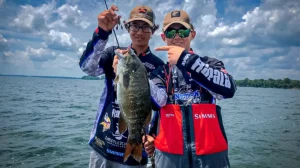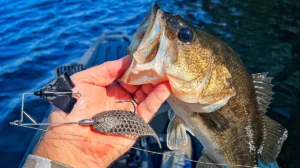From state record bass to countless “personal bests,” the Alabama Rig is an undeniable big fish producer. Wired2fish contributor Cody Hahner shares some crucial and often overlooked tackle and gear considerations for optimizing your umbrella rig for the conditions, be it depth, water clarity, weather, or predominant forage.
TACKLE USED
- ROD – St. Croix Victory Casting Rod, 7’10” Heavy
- REEL – Abu Garcia REVO STX Gen 4 Casting Reel, 6.6:1 (Replaces Older Gen)
- LINE – Seaguar Tatsu Fluorocarbon, 15- or 20-pound
- SUNGLASSES – Costa Del Mar Fantail Pro
Hahner’s 5 A-rig pointers to improve success:
- Use a beefed-up rod setup. The A-rig is a big, heavy bait with a ton of hardware, so you need to match your rod setup accordingly. Hahner stresses the need for a lengthy heavy-power rod equipped with a long handle. Length and power provide the required strength and leverage for all-day lobbing. Similarly, upsize to a bigger, lower gear ratio reel. A larger spool supports improved casting distance, while a lower gear ratio makes reeling easier.
- Change line size based on depth and water clarity. Hahner uses lines anywhere between 15- and 20-pound tests. Go lighter when fishing deep or clear water — the reduced diameter amounts to reduced drag and less visibility for line-shy bass. Go heavier when you can.
- Choose full bling baits in dirty water or when it’s overcast and windy, and go bladeless when things get tough. The extra flash and vibration of willow leaf blades get the nod when there’s some churn or color to the water. Sunny, calm, and clear — Hahner opts for bladeless umbrella rigs.
- Vary jig head weight based on depth. The A-rig produces best for Hahner when crawling it through the water. As such, he ops for heads lighter than one might expect. His go-to setup for 20 feet of water or deeper is a 1/4-ounce in the middle with two 1/8th ounce heads on the bottom. He fishes 1/8th ounce heads exclusively in less than 20 feet of water.
- Always rig the biggest and most appealing swimbait in the middle. This center mass strategy helps the bass home in on the center of the bait, which produces the best hooking percentages.
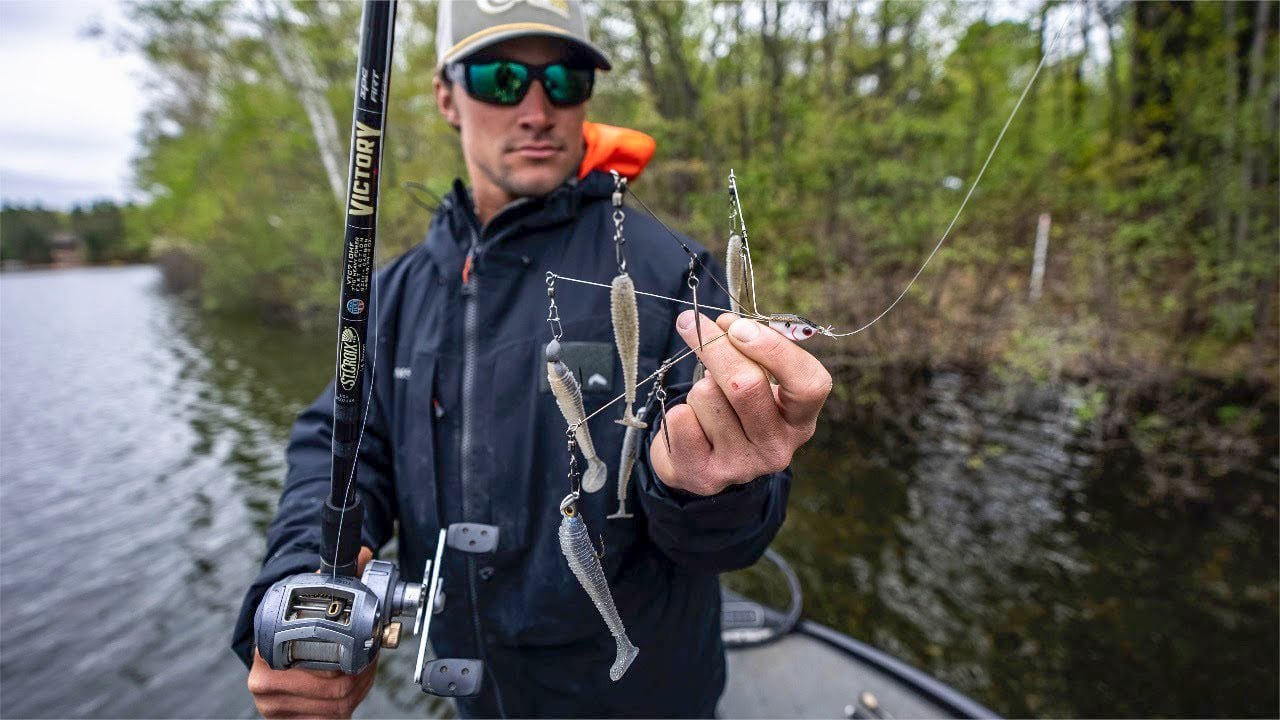

![[VIDEO] FFS Baits That Trigger More Bites](https://www.wired2fish.com/wp-content/uploads/2025/12/hunter-website-300x169.webp)
![[VIDEO] Why It’s Important to Change Casting Angles](https://www.wired2fish.com/wp-content/uploads/2025/12/cooper-ca-website-300x169.webp)
![[VIDEO] How to Catch Crappie During a Tough Bite](https://www.wired2fish.com/wp-content/uploads/2025/12/dechaine-website1-300x169.webp)
![[VIDEO] Connell’s Overlooked Tip for Catching Bigger Fish](https://www.wired2fish.com/wp-content/uploads/2025/12/connell-mayor-300x169.webp)
